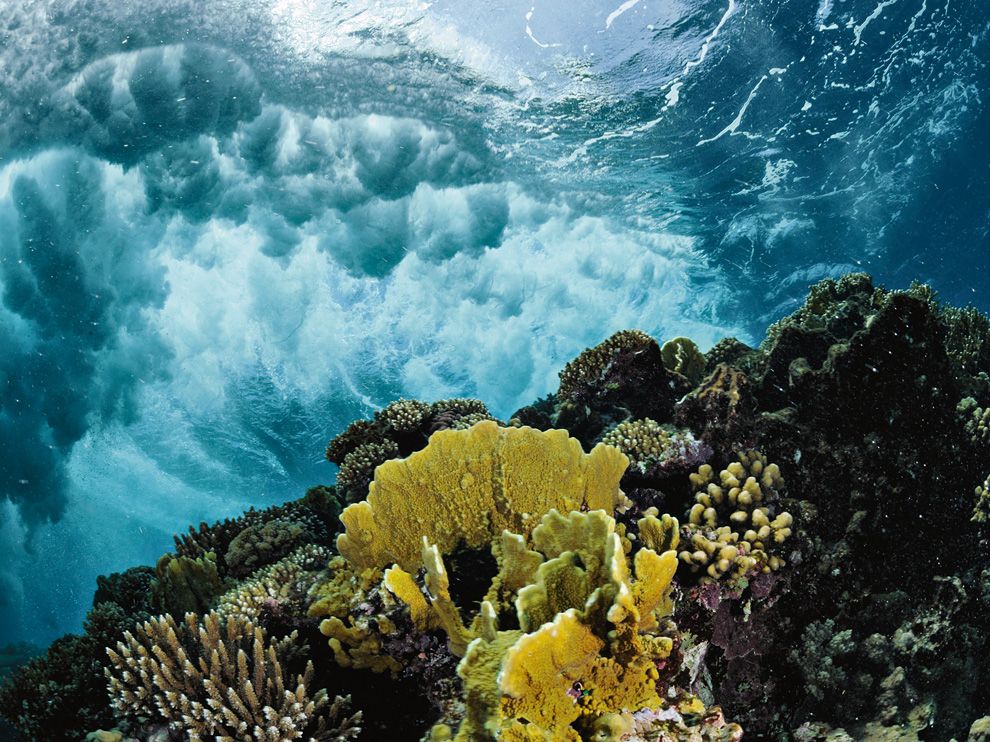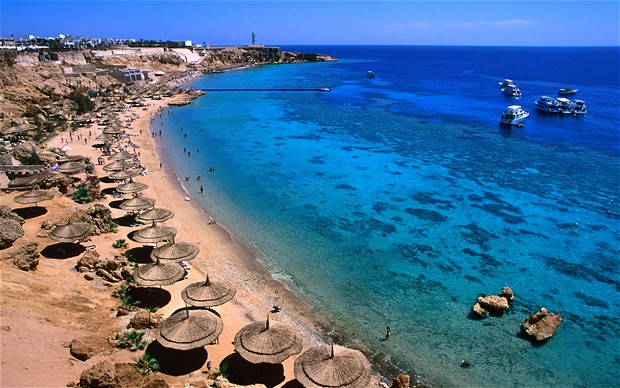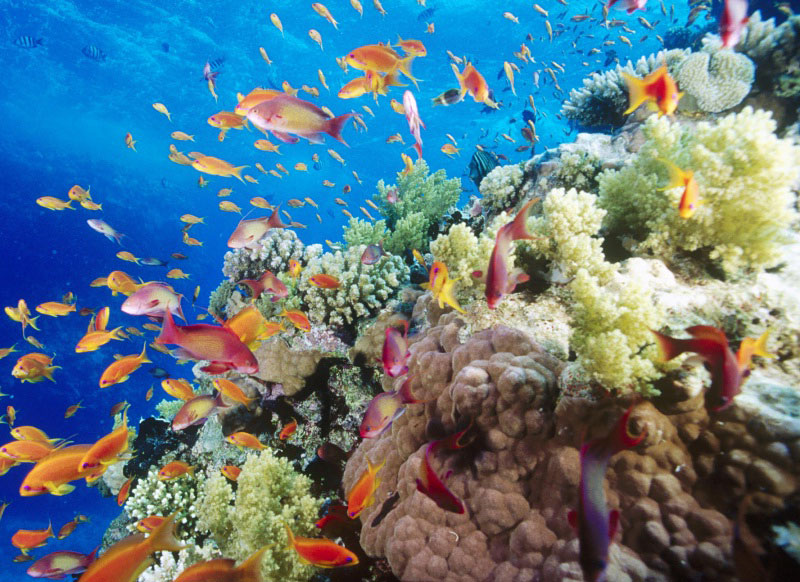Egypt has two coastlines, the Red Sea and the Mediterranean Sea. Each boast beautiful crystal waters and white soft sands, and some of the best beaches on the planet. The Red Sea, in particular, boasts extremely colorful and vibrant underwater life that is unmatched by any other reefs in the world, making the Red Sea Reefs one the world’s best diving spots.

It is not by chance that Jacques Cousteau chose the Red Sea Reef in Egypt to introduce the world to the wonder of marine life. People come here from all over to visit the historic Biblical site and find a world of grace underneath its waters as well. In fact, even land bound tourists are often inspired to begin their snorkeling and scuba diving careers here, when they hear about the beautiful corals and unusual sea creatures to be interacted with here.
Warm Seas Yield Unique Sea Life Here
Scientists study the corals here because, unlike other corals, the Red Sea Reef remains immune to the coral bleaching from global warming and, in fact, can withstand unusually high temperatures for coral. Part of this is probably due to the extreme warmth of the Red Sea.
Because the corals have adapted to warming temperatures here, they have a unique appearance as well, and look unlike corals anywhere else in the world. For one thing, these reefs are arrayed in a galaxy of colors that divers remark about all over the internet—saying they are the richest hues of any coral reef systems in the world.

The Red Sea Reefs extend along 2,000 miles of Egypt’s coastline. These reefs are estimated to be 5,000 to 7,000 years old. These reefs are fringing reef systems, which extend from shore along the coastline. The most proliferous reefs here are of two species. The generas Acropora and Porites.
Marine Diversity

Marine life is exceptionally rich and diverse in the Red Sea Reefs. Over 1,200 species of fish exist here, and 10% of these are completely indigenous to the Red Sea. The reef also boasts some 46 species of deep-water fish, as well.
A Valuable Port of Trade
The Red Sea has always been valued because it is one of the Middle East’s busiest shipping routes, bordering Egypt, Saudi Arabia, Yemen, Sudan and Jordan. Connecting Egypt with Asia, it is also a highly prized route for commercial trade.
Unique Factors Create Amazing Underwater Scenery
What makes the Red Sea unique among seas is that it is both the warmest sea in the world, with temperatures reaching 87 degrees, as well as the saltiest. The unique marine life and colors found here are created by certain environmental factors.
First, this sea is unusually calm, with gentle currents, which makes for unbelievable clear waters. The temperature is also warm and steady. And although these waters are very deep here, the heat emanating from a volcanic bed keeps these corals warm
Therefore, this complex, life-sustaining ecosystem has contributed to a wide and unusual variety of marine fishes such as neon orange groupers, hammerhead sharks, giant manta rays, and huge, gorgeous gorgonian fans. The waters are also frequented by some forty species of shark.
Divers should be made aware, however, that although the fish here are not dangerous to humans, there are species of shark found here that are dangerous to humans, especially the Tiger Shark, as well as Gray Reef Sharks, Moray Eels, and Yellowmargin Triggerfish.
Amazing Coral Diversity
The Red Sea Coral Reefs not only contain a huge variety of coral reef fish but an amazing variety in corals themselves. This coral reef system has not just shelved reefs, but also cylindrical reefs, such as the Blue Hole at Dahab.
Over two hundred species of coral, both hard and soft, thrive here. Many of the other reefs here contain atolls as well. But what is keenly unique about the Red Sea Reefs are the huge and sudden coral reef protuberances, which come from several feet under the sea and form a ridge-like system.

This unique cliff and ridge-like formations were caused by the shifting of tectonic plates on the ocean floor that has been happening since the world began.
Because of the area’s rich marine diversity, the government in Egypt has set up the Ras Mohammed National Park (1983), and the rules and regulations here protect the reefs from more dangerous sailing and fishing practices.
